In this issue:
08 No respect for manufacturing jobs
26 New applications drive ballscrew developments
86 Trends in linear guides rails, slides & systems
2017 TRENDS IN MOTION EDITORIAL:
Thank you, Online Shoppers (for driving automation)
Do you regularly get packages on your doorstep crisscrossed in a telltale black tape that doubles as a harbinger of satisfaction derived from a minimal-effort mix of whimsical purchases and necessities? If yes, then your household like mine subscribes to the modern first-world blessing known as Amazon Prime.
 Last year, Amazon’s long bet of putting company growth over profitability at last yielded substantial revenue. This is unsurprising to those of us counted among its faithful who have come to rely on the convenience of its one-click shopping (actually an Amazon patent expiring year) to reduce list-making, errand-running, and other shopping headaches.
Last year, Amazon’s long bet of putting company growth over profitability at last yielded substantial revenue. This is unsurprising to those of us counted among its faithful who have come to rely on the convenience of its one-click shopping (actually an Amazon patent expiring year) to reduce list-making, errand-running, and other shopping headaches.
Massive automation drives the e-commerce company, not to mention all the facilities of shipping companies supporting final delivery. Just a couple weeks ago, Amazon (with FAA assistance) made its first public U.S. drone delivery (containing some sunscreen) to the 2017 Machine Learning, Automation, Robotics and Space Exploration (MARS) conference in California. But far more significant are its 45,000 robots (SCARAs, delta pickers, the famous Kiva-now-Amazon AGVs, boxers, fillers, taping machines, and many more motion-centric setups) that work every day alongside huge conveyor networks — 15 miles long at the Baltimore fulfillment center, to give one example — in 90-odd automated locations across the U.S.
Only the order volumes of 300 million online shoppers could justify this level of automation.
What’s more, in a fascinating feedback loop of cultural influence on the motion-engineering industry, Amazon-style online tools for B2C shopping are raising machine builders’ expectations for price and delivery information without needing to talk to a service representative.
In short, B2C online-shopping trends are informing new online tools for B2B purchasing and engineering design. That’s an observation from Mike Parzych of GAM Enterprises, who provided insight for this 2017 Design World Motion Trends issue. GAM and several other motion-component suppliers we surveyed offer (or will soon have) digital tools for EMs and end users to design and specify motion components; customize power-transmission subsystems to satisfy design parameters; match motors and machine geometries and axis requirements; and hone feedback and controller functions in virtual environments before deploying. Visit linearmotiontips.com and search “trends in online configuration tools” for what’s here and on the horizon.
Clearly online shopping is spurring motion installations in massive distribution warehouses and inspiring tools for B2B purchasing. But these aren’t the only ways in which online connectivity is affecting motion design. Cloud-based platforms and decentralization of control electronics are enabling new possibilities for IoT in the motion-system applications space.

Online ordering supports customization … begets more automation: The m on standard M&Ms are printed with rotogravure, but now the candymaker Mars uses connected automation and ink-jet printers to make and sell custom M&Ms.
There’s more of the B2C online-shopping feedback loop here: Some of the drive towards industrial IoT is to boost manufacturing flexibility — and satisfy growing demand for customized product. Advisory firm Forrester Research estimates that more than 35% of online shoppers in the U.S. now want to customize product features to their specification and purchase build-to-order products. Watch the classic Malcolm Gladwell TED Talk Choice, happiness and spaghetti sauce for a description of this trend’s origins and the rise of chunky sauces as an example of industry adaptation.
Essentially, IoT in motion machinery boils down to distributed sensors and digital control for remote monitoring and wireless communications (often to the enterprise level) as a way of tracking machine performance and boosting overall output. Recall that the industrial IoT is billed as Industry 4.0 in European circles in part to underscore its significance — ranking IoT with the Industrial Revolution, the rise of assembly lines, and the rise of digital technologies.
Supporting the current trend towards more IoT in motion design is the falling cost of embedded sensing as evidenced by SoCs in smartphones and other relatively inexpensive consumer products. That’s according to Travis Schneider, product manager of high precision mechanics at the Parker Hannifin Electromechanical and Drives Division.
Read more of Schneider’s IoT insight at motioncontroltips.com. Such sensing for motion designs can include feedback based on vibration, vision, infrared, inertial, and electromagnetic sensing.
Again, embedded smarts for distilling feedback data at the device (as well as communicating the results) are part of the IoT setup. To this end, Parker and others offer online specification and ordering — as well as deployment of components with smart tags listing (in some cases) component born-on date, unit-specific characteristics, and relevant data sheets. In addition, myriad technical challenges could soon be addressed through analysis of massive data at the machine level. One example is the enhanced encoding technology of HIPERFACE DSL that allows for local memory and additional diagnostics. Security is still a major concern, but Schneider sees huge opportunity for on-device analytics and diagnostics — and moving away from traditional enterprise-level analytics on programmable automation controllers (PACs) and fieldbus-enabled valve banks, for example.
“These new smart devices may take the form of an actuator self-diagnosing its own issues before they’re problems — or compensating on the fly for its inherent flaws to improve performance,” Schneider added.
One of the most exciting new applications for IoT (and a new iteration of electric-motor-driven motion design) is that for automobiles — in electric (e-mobility) and autonomous vehicles. According to Jeff Hemphill, V.P. and chief technical officer of the Schaeffler Group North America, there’s concurrent symbiotic acceleration of the two. Within vehicle applications there will soon be IoT in connected and autonomous vehicles that link into vehicle infrastructure, said Hemphill. That will be increasingly important as electric-powered drivetrains tap into smart grids supporting the fleets’ power demand. Read more of Hemphill’s commentary in this Motion Trends section on motors — and as always, let us know what you think of this year’s motion-technology changes and predictions. 
You may also like:
Filed Under: DIGITAL ISSUES • DESIGN WORLD

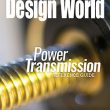
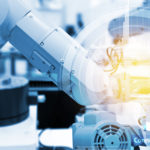


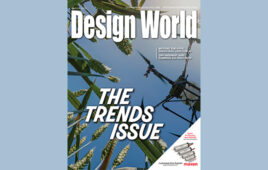
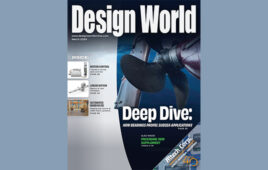
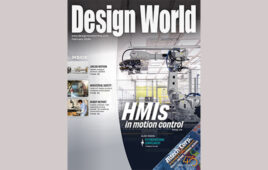
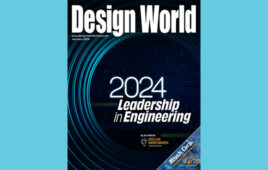
Tell Us What You Think!